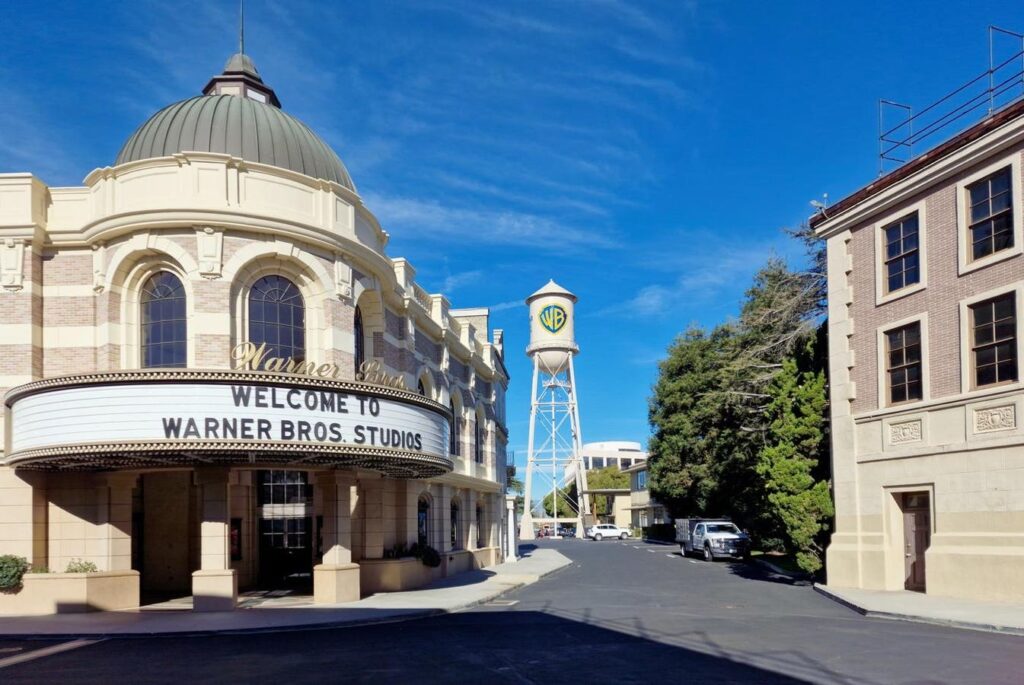Burbank, California, USA – January 9, 2024: Nestled in the heart of the studio, the 513 seat Steven … More
The password is “separate.” Warner Bros. Discovery’s formal announcement of its anticipated separation into two distinct media companies follows the industry’s latest M&A trend. WBD joins Comcast and Lionsgate – and Fox of several years ago – in spinning off cable networks that still throw off cash but represent a spectacularly successful media past rather than a foundation for the future.
As to the specifics of the WBD plan, the company’s separation very definitively undoes the merger of the legacy Discovery Communications and Warner Media that closed only three years ago, which of course followed in the footsteps of AT&T purchase of Warner Media which only closed in 2018. There will be two new companies, one now referred to as Streaming & Studios, consisting of the Warner Bros. studio and library, HBO Max, and HBO, the only remaining legacy cable network in its stable. That company will be led by current WBD CEO David Zaslav.
The second company is for now named Global Networks, to be headed by current WBD CFO Gunnar Wiedenfels. This company will look much like the old Discovery paired with the old Turner Networks, consisting of Discovery Channel, CNN, TNT, Food Network, and a host of others. This entity – unlike Comcast’s Versant spin-off – will assume a great deal of the debt inherited from the purchase of Warner Media by Discovery, adding more challenging fuel to its fire.
The legendary stage actor Edmund Kean supposedly said on his death bed: “Dying is easy; comedy is hard.” So too, is separation easy. The hard part is to successfully shape what comes next. Where should we be looking?
What’s the track record on media industry separations?
Every deal has its own rationale and its own narrative that follows separation – you can’t say the act itself guarantees any particular outcome. For Time Warner, it was certainly smart to spin-off both its Time Warner Cable and Time Inc. publishing businesses, but the outcomes for the separated entities diverged wildly. The cable systems eventually landed successfully in the arms of Charter Communications, while life for the stable of iconic Time Inc. magazines has been anything but stable, from the end of Entertainment Weekly to the demise of Sports Illustrated in all but name only.
Viacom and CBS tried the merger, separation and then re-merger (as Paramount Global) route, only to end up now in the purgatory of deal hell with Skydance Media’s proposed acquisition of Paramount. There isn’t much of anything positive to point to in this whole saga.
What early steps will we see from the two new Warner Bros. Discovery companies?
For the Streaming & Studio business, what’s left for consolidating? Lionsgate post-Starz spin-off would be the most obvious choice, without the weight of cable networks on both sides and with a host of still-viable Lionsgate franchises including John Wick, The Hunger Games and Saw. This could be a mini-Disney move for the always-deal focused Zaslav. And as to streaming, the move back to the HBO Max brand might end up complicating a quick move to consolidate with other streaming services such as Peacock and Paramount Plus.
On the Global Networks side, besides the inevitable continuation of cost-cutting, I’m very curious to see where they go with sports. The separation announcement itself called out “TNT Sports in the U.S.” among only three listed cable brands (with CNN and Discovery). After losing the NBA rights under its new media agreement, TNT has seemed hell-bent to acquire more sports rights including Roland Garros tennis and the new Club World Cup in soccer. But getting significantly bigger in sports will be extremely expensive, battling both legacy media companies and Big Tech. The new Versant, led by long-time sports media executive Mark Lazarus, has made clear its own intent to double down on sports. And of course, Disney is about to launch its standalone ESPN as sports media competition rages.
Where do the legacy media competitors go?
There was a strange meta-moment this past weekend as CNN, the most prototypical name in cable news, broadcast a live Broadway production of Good Night and Good Luck, the George Clooney vehicle about the legendary newscaster Edward R. Murrow from the “Tiffany” broadcaster CBS News. But are there two more troubled brands in the world of news today than CNN and CBS News?
Paramount Global, CBS’s owner, is battling for its corporate life. CBS News is weighing accommodations to the Trump Administration that have already leveled its management and might yet threaten the future of 60 Minutes. CNN’s troubles have been under the microscope at least since the WBD takeover, and its digitally centered future is an uncertain one at best. Might there be some partnering in the future for these entities?
Among the new Global Networks and its competitors, will there finally be the sunsetting of secondary and tertiary cable network brands? How long can networks such as Paramount’s VH1, Disney XD and a host of Global Networks remain 24X7 cable networks as opposed to shifting investment to digital platforms? Decisions like these, far more than corporate separations, will really determine the future direction of these companies and their brands.
Read the full article here
